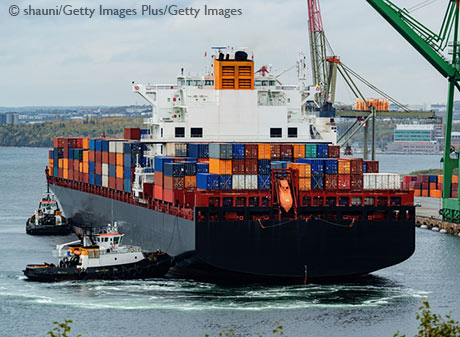How Costly Is Raising Trade Barriers?

With the U.S. raising tariffs on imported goods, American firms that depend on these goods may have some decisions to make. They might respond by continuing to import such goods and paying more or by substituting them with domestic goods that might not perfectly replace the original imported goods. Either alternative is costly to the firms and consumers involved.
Similarly, if foreign governments retaliate by raising tariffs on imports of U.S. goods, foreign firms might be forced to reduce their dependence on goods imported from the U.S., replacing them with domestic goods or imports from other countries.
International Business Relationships
One additional and often-overlooked cost of these effects is that they might break up many relationships between U.S. firms and their international counterparties. This matters not just because they affect firms’ decisions today, but because they might also affect their decisions well into the future if trade barriers are eventually reduced again. To the extent that it is difficult for firms to find international trade partners, the broken relationships might make integration back into world trade more difficult for the U.S. economy if trade barriers were later reduced. In this post, I investigate the extent to which this might be the case.
Evidence from Europe and Asia
Measuring these costs is difficult due to the scarcity of data. How would one measure the difficulty or ease at which firms may find trade partners?
I used the Management, Organization, and Innovation survey collected by the European Bank for Reconstruction and Development and the World Bank. The dataset contains information on a sample of manufacturing plants with 50 to 5,000 employees across 12 countries over the 2008-09 period. The countries in the dataset are: Germany, Belarus, Bulgaria, Kazakhstan, Lithuania, Poland, Romania, Russia, Serbia, Ukraine, India and Uzbekistan. And the dataset contains information on around 100-300 plants per country.
This survey asks plants a question that might be particularly informative on the costs of finding a new provider of goods once relationships break down: “If this establishment shut down its business, how long would it take your largest customers to find an alternative supplier for its main product?” I grouped the responses into three options:
- Less than a month
- A month or more
- Never (it would be impossible to replace)
| Firms | Less than One Month | More than One Month | Never |
|---|---|---|---|
| All Firms | 58% | 36% | 5% |
| Nonexporters | 65% | 30% | 5% |
| Exporters | 42% | 50% | 8% |
| No Competitors | 14% | 10% | 76% |
| One to Five Competitors | 57% | 40% | 3% |
| More than Five Competitors | 65% | 32% | 3% |
About 36% of all firms reported that it would take their customers at least one month to replace them and 5% claimed they could never be replaced.
While these values depend on the firms’ self-perception about how essential they might be for their customers, they do suggest that a very significant fraction of firms might induce significant costs on their customers if their relationships with them break down.
In addition, these costs are likely to be higher for firms engaged in international trade. In particular, I found that 30% of nonexporters reported that their customers would take at least a month to replace them, and 5% of nonexporters reported their customers would never be able to replace them. The respective values were higher across exporters: 50% and 8%, respectively.
This is reasonable: Firms that rely on international trade likely could not find a domestic supplier from which to purchase, so these firms would likely have a tougher time finding a replacement.
Competition and Firm Replacement
Consistent with these findings, I also found that the difficulty in finding replacement firms decreased with increased competition. Firms without competitors were very difficult to replace:
- 76% reported they could never be replaced.
- 10% reported it would take at least one month for customers to be replaced.
In contrast, the values corresponding to firms with one to five competitors were 3% and 40%, respectively (and 3% and 32%, respectively, for firms with more than five competitors).
Conclusion
These findings suggest that broken relationships across firms are hard to replace. And this is particularly the case across firms that trade internationally and face a limited number of competitors.
It is hard to say how informative these findings are likely to be for understanding the impact of recent changes in U.S. trade policy. What they do suggest is that changes in trading relationships might be hard to revert back, and this is an additional often-overlooked cost of raising tariffs which one might want to take into account when evaluating the costs and benefits of tariff changes.
Additional Resources
- On the Economy: Breaking Down the U.S. Trade Balance
- On the Economy: North American Connectedness after NAFTA
- On the Economy: What’s Behind the Global Decline in Trade Barriers?
Citation
Fernando Leibovici, ldquo How Costly Is Raising Trade Barriers?,rdquo St. Louis Fed On the Economy, July 15, 2019.
This blog offers commentary, analysis and data from our economists and experts. Views expressed are not necessarily those of the St. Louis Fed or Federal Reserve System.
Email Us
All other blog-related questions


